Teaching and Outreach
Teaching
MSE Courses
MSE 230 Structure and Properties of Materials (sophomore intro course)
MSE 235 Materials Properties Laboratory (sophomore-level lab)
MSE 330 Processing and Properties of Materials (junior core course; Erk redesigned through IMPACT)
MSE 367 Materials Processing Laboratory (junior-level lab)
MSE 420 Structure and Properties of Organic Materials (Erk developed; junior core course)
Guest Lectures
MSE 190 Introduction to Soft Materials (view slides)
ENGR 131 Introduction to Materials Engineering (view slides)
ENGR 194 Women In Engineering seminar
ENGR 494 Women in the Workplace
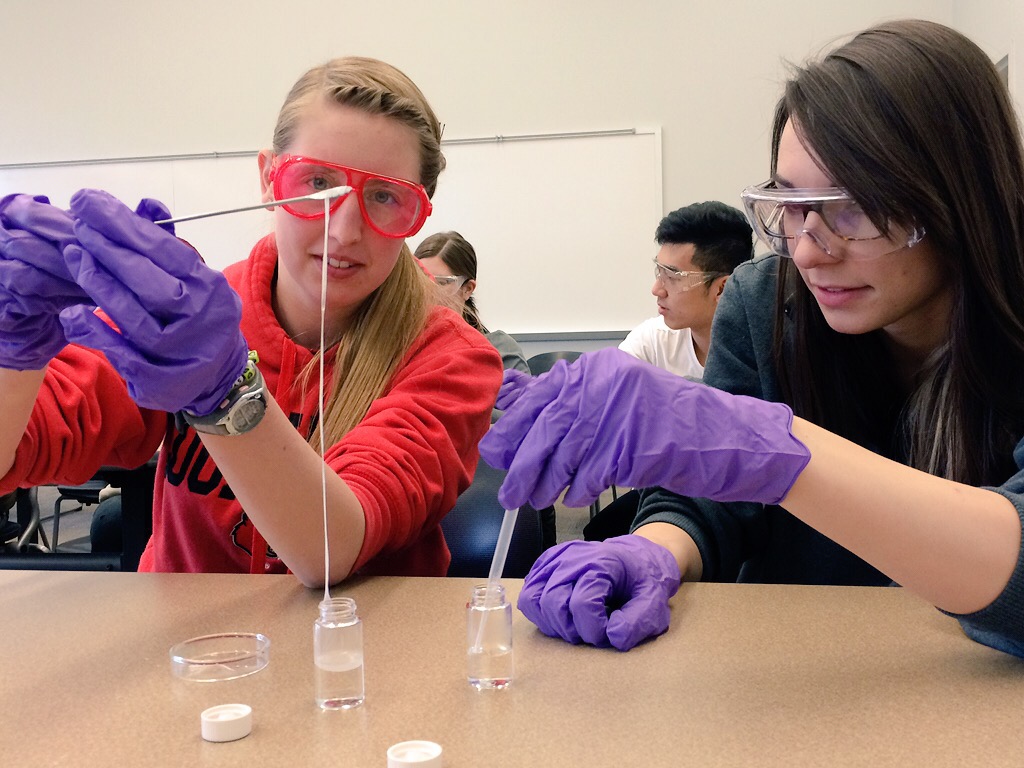
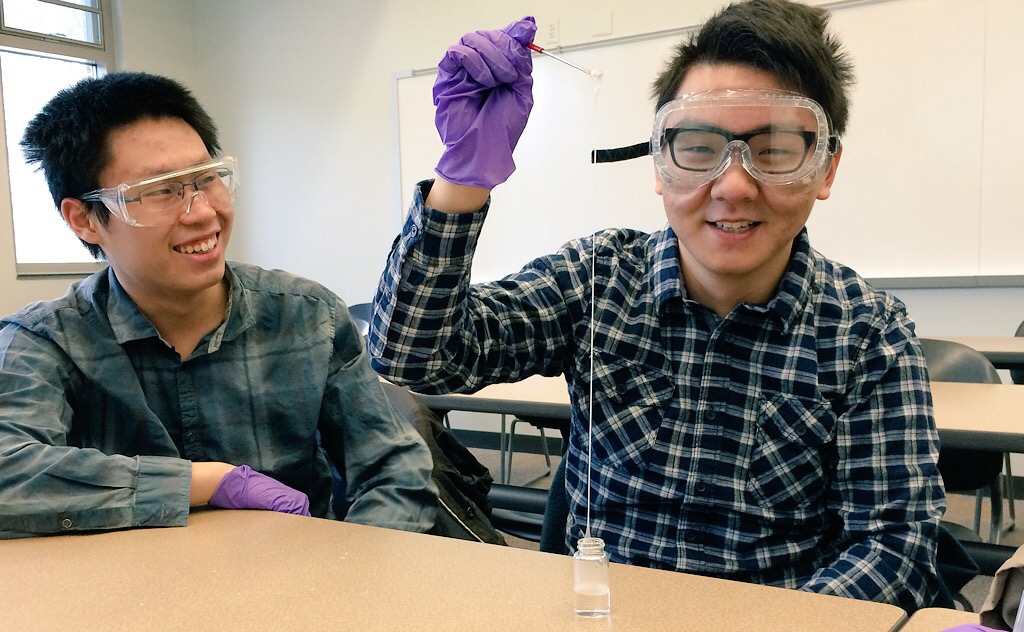
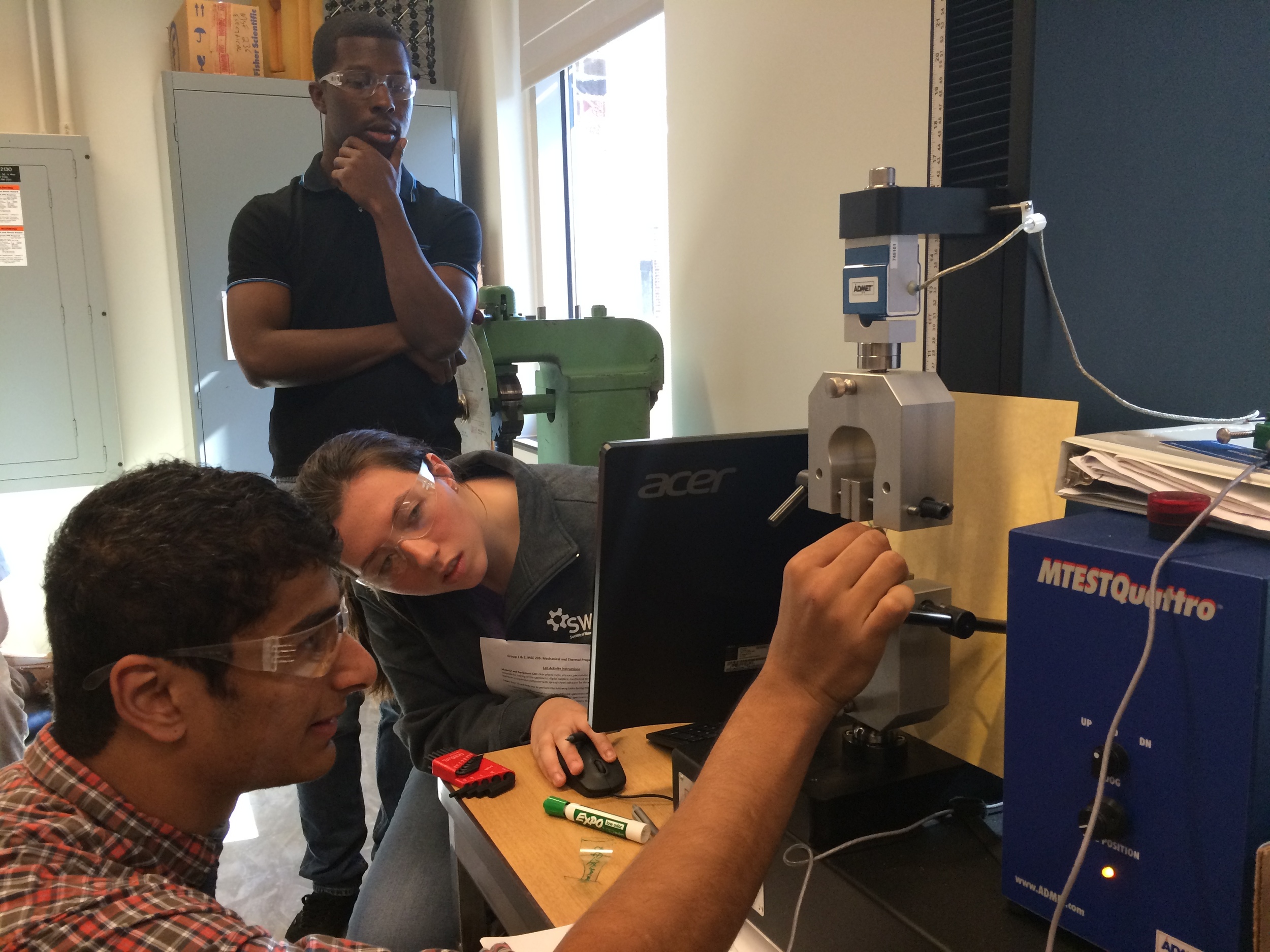
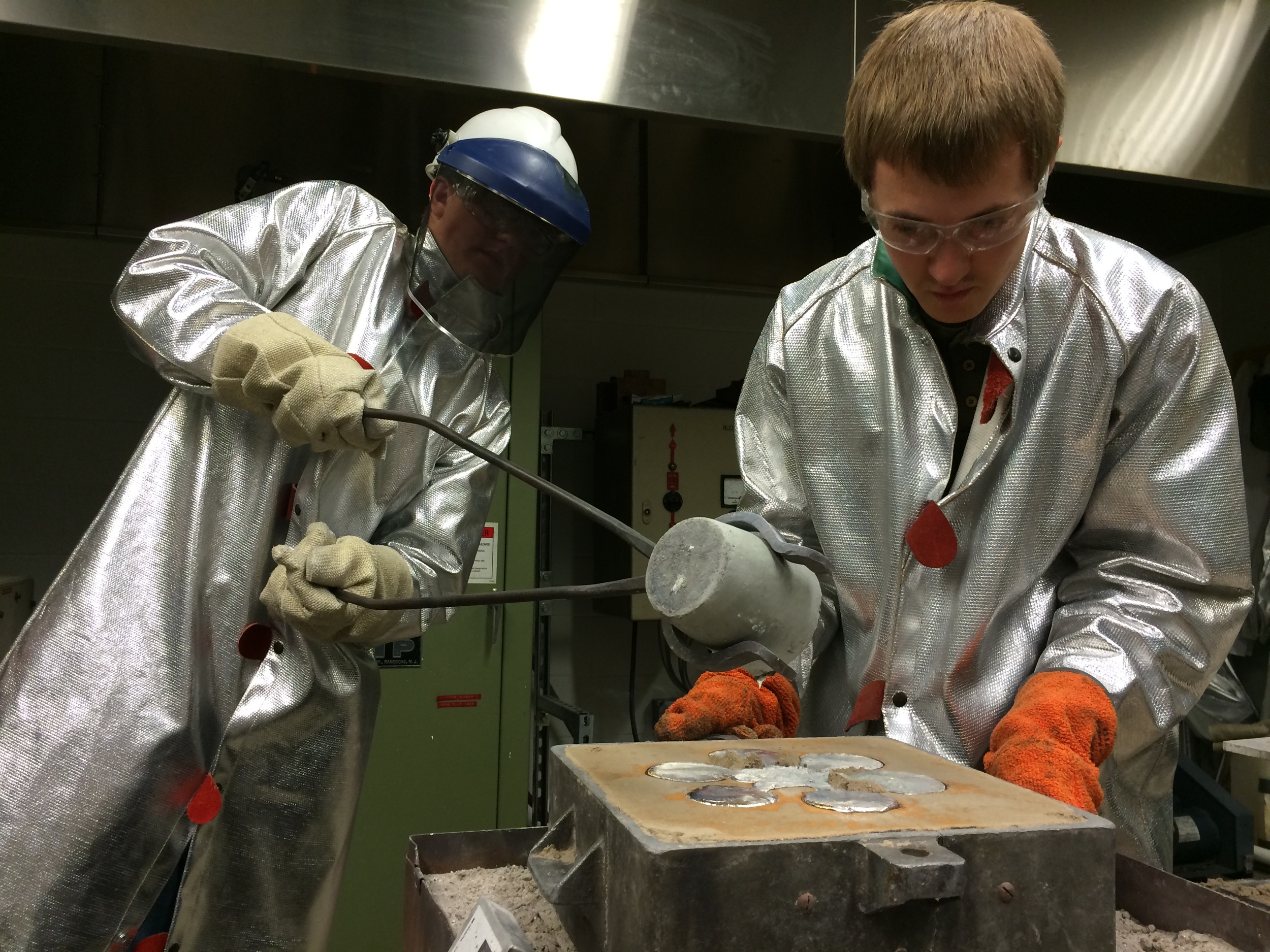
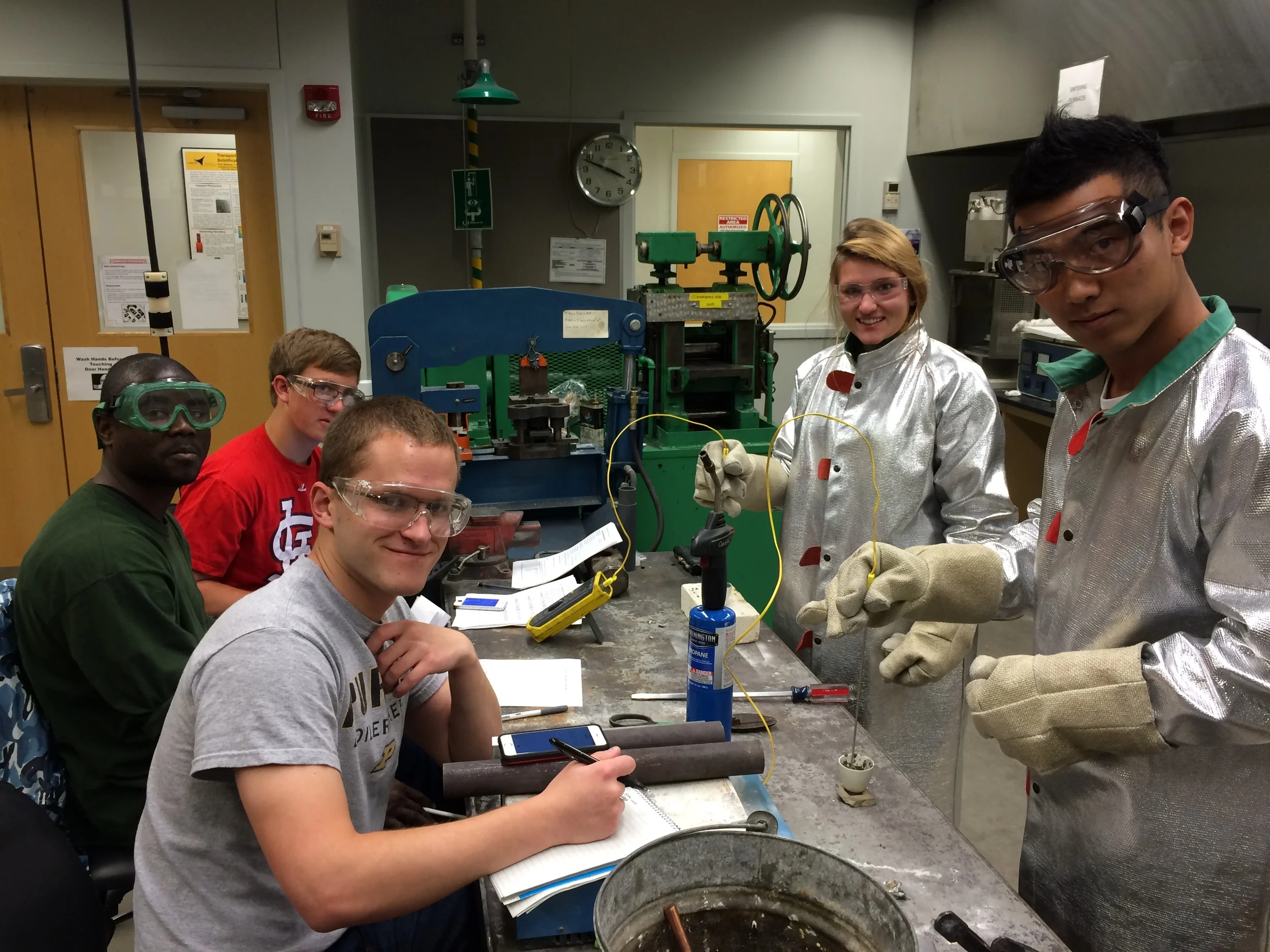
Outreach
K-12 Efforts
Prof. Erk and her research group participate in a variety of outreach activities directed at P-12 students, including recruiting and educational events for high school students sponsored by Purdue's Women in Engineering Program, Purdue's 4-H Round-Up, and the Purdue Minority in Engineering Program.
Additionally, Prof. Erk was involved as Co-PI on the NSF-funded “Science Learning through Engineering Design” (SLED) Program at Purdue from 2014-2019 (award #0962840; PI Prof. Brenda Capobianco, Purdue). She led a design team composed of Purdue faculty and local elementary teachers that developed inquiry-design activities and lesson plans for grades 3-6 that are in-line with Indiana state math and science standards and the national Next Generation Science Standards. Activities were communicated to local teachers during a 2-week summer institute and are publicly available through the SLED Group on STEMEd hub. The following images are from: Erk, K.A.; Lumkes, J.; Shambach, J.; Braile, L.; Brickler, A.; Matthys, A., "Designing a Sound Reducing Wall", from the September issues of Science and Children, 2015. link PDF
Testing station for the "Sound Reducing Wall" SLED activity for grade 3 classroom.
Students building their sound reducing wall with their teacher.
Example of a group design for a sound reducing wall.
College-Level Efforts
Prof. Erk and her research group actively participate in engagement activities sponsored by Purdue's Women in Engineering Program, including the Graduate and Undergraduate Mentoring Program. Prof. Erk has also been an invited lecturer in ENGR 194, the first year engineering seminar for women engineering students. Additionally, Prof. Erk and her students helped to develop new curriculum and lab activities for the Pre-Engineering Program (fact sheet) at Ivy Tech Community College in Lafayette, Indiana in collaboration with Prof. David Ely at Ivy Tech. Aspects of this collaboration are described in the following ASEE proceeding: D.R. Ely, J.E. Bice, and K.A. Erk, “Work in Progress: Leveraging the Diverse Backgrounds of Community College Students to Teach Team-Based, Multidisciplinary Engineering,” ASEE Conference Proceedings, 125th Annual American Society of Engineering Education Conference & Exposition, Salt Lake City, UT, June 24-27, 2018. Paper ID # 22218. doi: 10.18260/1-2--31295 link
Additionally, Prof. Erk is a current Co-PI on the NSF-funded “Using Engineering Principles of Design to Advance Teacher Education of Prospective Elementary Teachers” (UPDATE) Program at Purdue from 2016-2023 (award #1626197, DUE-IUSE; PI Prof. Brenda Capobianco, Purdue). The goal of this project is to incorporate instruction on engineering design within science courses that are taken by undergraduate students in elementary education programs (i.e., pre-service elementary educators) so that future elementary and middle school students can be exposed to engineering and design within their standard science courses. The UPDATE team is composed of Purdue faculty in science education, physics, biology, chemistry education, engineering education, and materials engineering (Erk). Similar to SLED, the engineering design activities are linked to existing science course objectives as well as NGSS disciplinary core ideas and cross-cutting concepts. New evidence-based instruments are also being created to evaluate the impact of the engineering design experiences on the students’ understanding of engineering practices and design, science, and pedagogy. Prof. Erk’s role on the team is as an engineering “consultant”, helping to create and refine the biology and chemistry activities as well as develop and test the grading rubrics used to assess student artifacts. Aspects of this collaboration are described in the following publication: J. Radloff, B. Capobianco, J. Weller, S. Rebello, D. Eichinger, and K.A. Erk, “Aligning Undergraduate Science Curricula with Three-Dimensional Learning,” Accepted/in press Journal of College Science Teaching, in press (2022).
Other Contributions to ASEE
Erk, K. A., Nash, J. J., & Woods, H. K. (2016, June), “Using Mechanical Testing of Disposable Plastic Cups to Illustrate Processing-Structure-Property Relationships in an Introductory Materials Laboratory Course” Paper presented at 2016 ASEE Annual Conference & Exposition, New Orleans, Louisiana. 10.18260/p.27150
Abstract: A hands-on activity was implemented in a sophomore-level materials engineering laboratory to illustrate how the structure and properties of polymeric materials are directly influenced by the method of processing. The mechanical properties of specimens cut from the walls of poly(ethylene terephthalate) cups, oriented parallel and perpendicular to the thermoforming direction, were measured in tension. The parallel sample displayed greater elastic moduli, yield stress, and predominantly ductile deformation behavior compared to the relatively weaker and more brittle perpendicular sample. This observed mechanical anisotropy was related to the processing-induced orientation of polymer molecules within the cup. Students’ learning outcomes were assessed and it was found that processing-structure-property relationships were communicated most effectively by encouraging the students to describe their ideas through molecular-scale sketches and further challenging them to design their own hypothesis-driven experiments as compared to a traditionally prescribed lab activity. link to full paper
Glossary of materials engineering terminology, Materials list and step-by-step instructions, Pre-activity reading and discussion questions.
Lab activity was adapted from the following publication: K.A. Erk, M. Rhein, M. Krafcik, and S. Ydstie, "Demonstrating the Effects of Processing on the Structure and Physical Properties of Plastic Using Disposable PETE Cups," Journal of Chemical Education, 2015. doi: 10.1021/acs.jchemed.5b00082. link (PDF of author accepted version)


